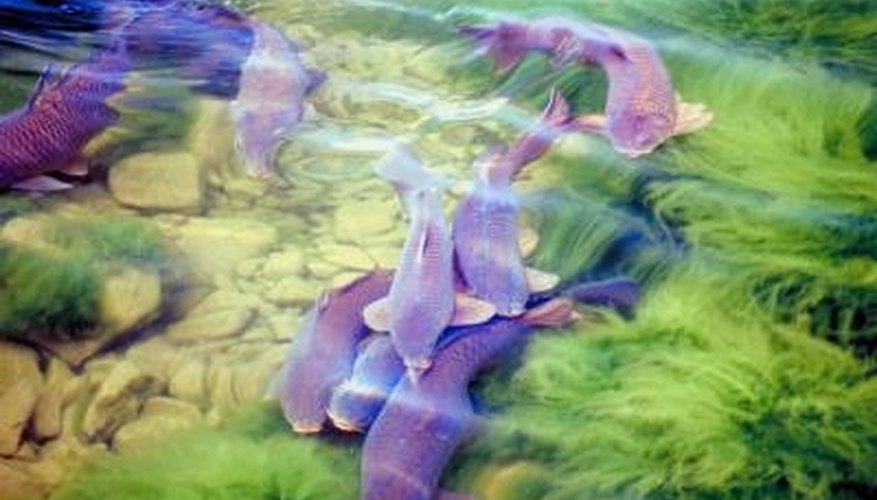
Dozens of species of catfish exist, each exhibiting similarities along with individual identifying characteristics. The differences between the smaller bullhead catfish and the larger channel catfish are evident in the details of their physical features, nesting habits and diet.
Appearance
Bullheads have flat broad heads, compact bodies, rounded fins and a squared-off tail. They range in length from 8 to 14 inches and typically weigh 1 to 2 pounds. Their fins contain saw-toothed spines that they use for defense; these cause an uncomfortable sting upon contact. The back is darker brown and the belly is yellow.
Channel catfish are sleeker in form, with a narrower mouth and deeply split tail. They often reach 20 inches in length and 25 pounds in weight. The back is brown to bluish, and the belly is silvery white.
Diet
Both types of catfish are omnivorous, and rely on their taste buds to locate food. Bullheads and channel catfish both feed on insect larvae, aquatic insects, crayfish, snails, clams and seaweed. However, channel catfish consume more live fish than bullheads and the larger ones have even been known to devour the occasional bird.
Nesting and Spawning
Bullheads and channel catfish both spawn in late spring to early summer in mud or sand. Bullheads lay their eggs in saucer-shaped nests built in depressions in the gravelly river or stream bottom. Channel catfish dig tunnels, usually under logs or embankments, in which to lay their eggs.
Habitat
Bullheads can tolerate low-oxygen, high-carbon dioxide and acidic muddy bottom waters. Bullheads rarely swim up to the surface of the water, preferring the murky bottom, where they are able to "breathe" through their skin. Channel catfish cannot tolerate oxygen-poor waters, preferring clear running rivers and streams.
References
Writer Bio
Ann Yacono has been editing scientific books and journal articles for more than 20 years. She writes and copy edits nonfiction articles on diverse topics. Yacono earned a B.A. and M.A. in English from Lehigh University and is a board-certified editor in the life sciences (ELS).



